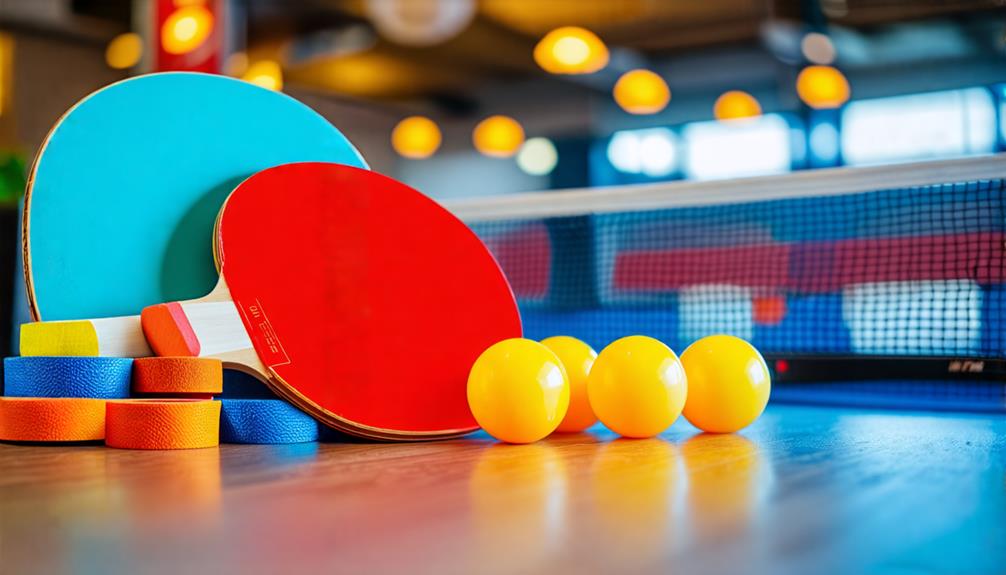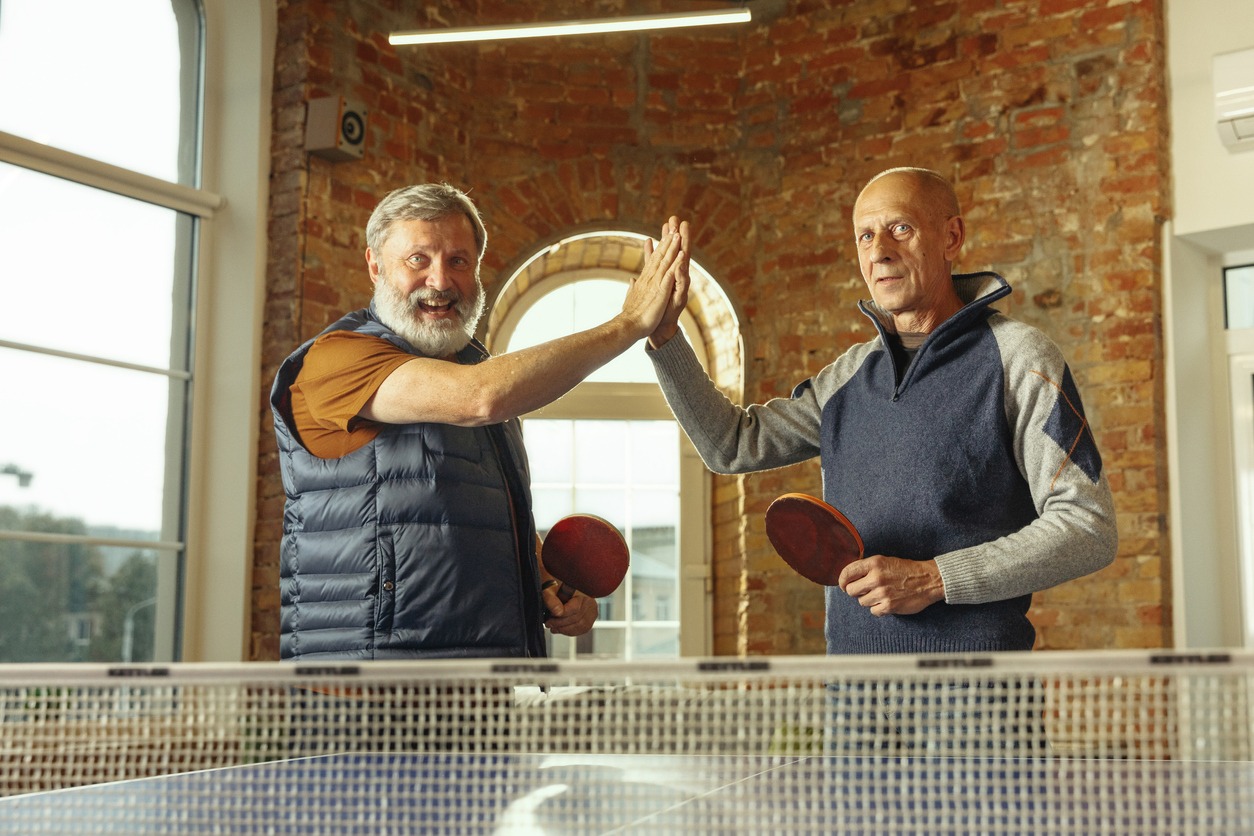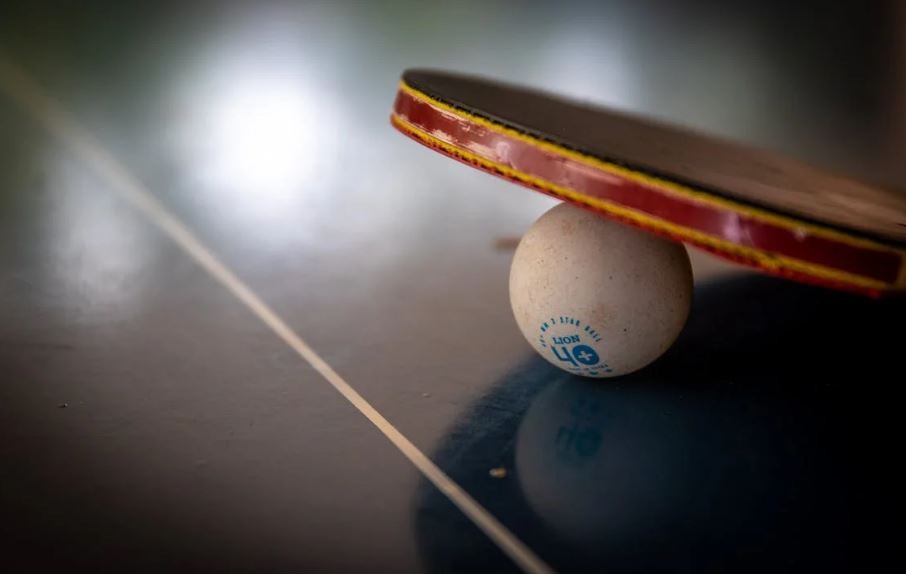Can You Return a Ping Pong Ball Before It Hits the Table?
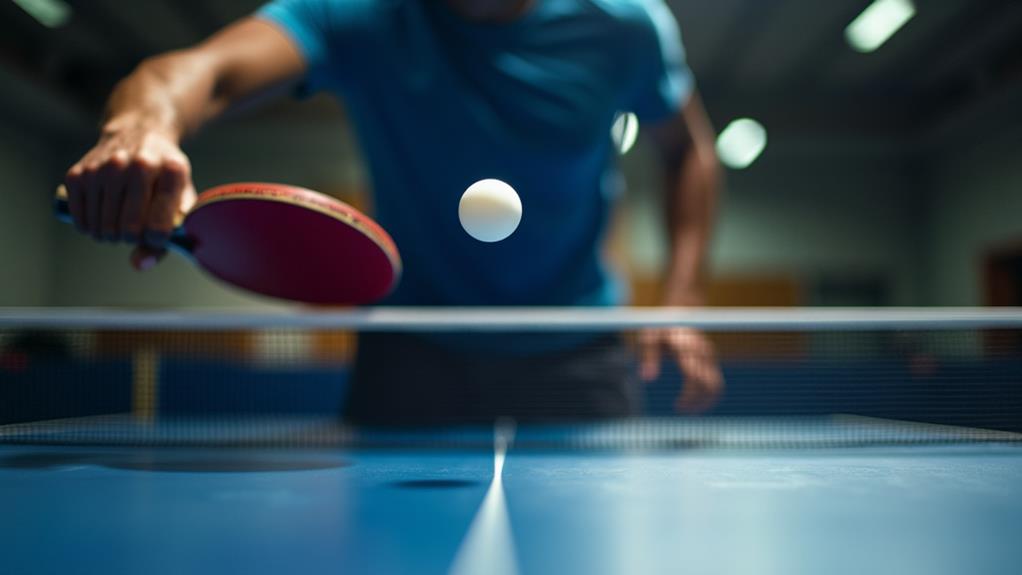
No, you can't return a ping pong ball before it hits the table. This act, called volleying, breaks the rules and causes you to lose the point automatically. The ball must bounce on your side before you hit it to count as a legal return. Letting it bounce helps judge its trajectory and spin, maintaining fair play. Misunderstanding this rule may lead to frustration, but knowing it guarantees adherence to ITTF standards. If you're interested in strategies for making legal returns and enhancing your game, there's a lot more to investigate.
Understanding Ping Pong Rules
Understanding the rules of ping pong is vital if you want to play the game correctly and fairly. One fundamental rule involves how you must interact with the ball. You can't hit the ball before it bounces on your side of the table. Doing so is called volleying, and it's considered an illegal move. According to ITTF rules, this results in an immediate loss of the point, awarding it to your opponents.
When you serve or return the ball, it must initially touch your side of the table before you can hit it back. This guarantees the game maintains its intended pace and fairness. If you strike the ball before it bounces, not only are you breaking the rules, but you're also giving away an easy point to your opponents.
Understanding these specific rules about the ball's bounce is vital for avoiding penalties. It helps you focus on your timing and positioning, which are key skills for effective returns. By adhering to these rules, you contribute to the integrity of the game and improve your comprehensive strategy. Remember, fair play is just as significant as skill in ping pong.
The Role of the Bounce
The bounce in table tennis isn't just a rule—it's a significant element that defines the game. Every player must let the ball bounce on their side before attempting a return. If you hit the ball before it bounces, it's considered a violation known as volleying. This rule guarantees the pace and fairness of the game, keeping rallies engaging and competitive. When you serve, the ball must bounce once on your side before crossing over to your opponent's, setting the stage for a strategic rally from the very start.
Allowing the ball to bounce impacts your shot selection and timing. By waiting for the bounce, you can better judge the ball's trajectory and spin, giving you a tactical advantage. If you strike the ball before it hits your side of the table, you immediately lose the point. This penalty reinforces how important the bounce is in maintaining the integrity of table tennis gameplay. Understanding this rule helps you refine your strategy, making each rally more dynamic and challenging.
In essence, mastering the role of the bounce is fundamental for any player aiming to excel in table tennis. It shapes every serve, shot, and return, guaranteeing a fair and exciting match.
Penalties for Volleys
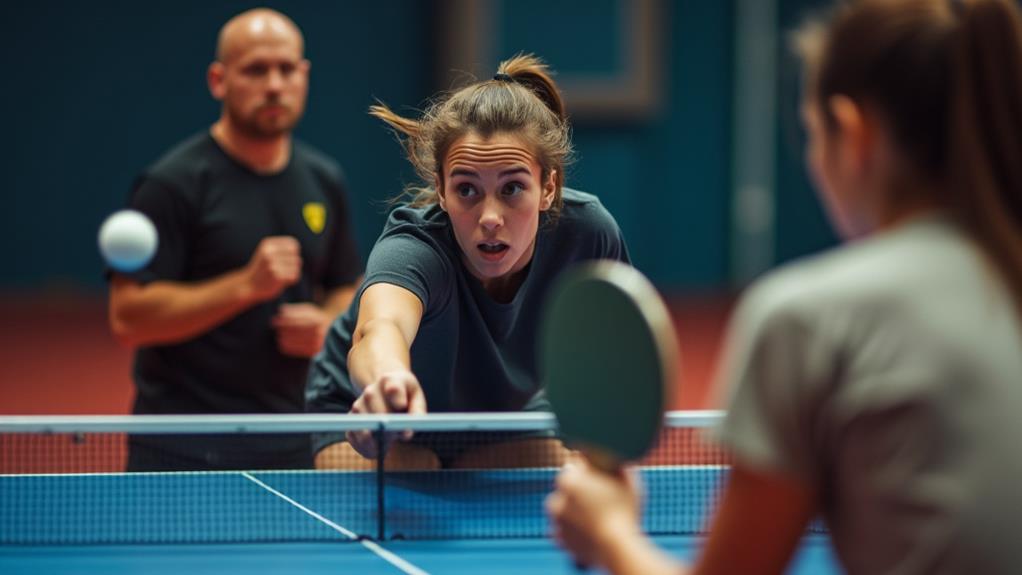
Hitting the ball before it bounces on the table, known as volleying, results in an immediate penalty in table tennis. According to Rule 2.5.3 of the ITTF regulations, a player who volleys the ball loses the point instantly. This rule is vital because it maintains the game's pace and fairness, ensuring that every player gets a fair chance to return the ball after it has bounced.
The prohibition of volleys in table tennis might confuse you if you're used to sports like tennis, where volleying is allowed. However, in table tennis, the ball must bounce on your side before you attempt a return. Failing to adhere to this rule not only results in penalties but can also disrupt your gameplay and rhythm.
Understanding and respecting these rules is fundamental. If you consistently volley the ball, you'll rack up penalties, which can be frustrating and detrimental to your performance. By allowing the ball to bounce and then making your return, you align with ITTF standards and improve your overall gameplay. So, remember, keep an eye on that bounce to avoid unnecessary penalties and elevate your table tennis experience.
Exception Scenarios
Steering through the rules of table tennis can sometimes feel like a tightrope walk, but knowing the exception scenarios can save you from needless penalties. While players are prohibited from volleying, meaning they can't hit the ball before it bounces on their side, there are specific exception scenarios you should be aware of. For instance, if the ball hits the net and then bounces back over to your side without your opponent touching it, the original player is awarded the point. This is because the ball made a valid shot by contacting the top surface of the table before bouncing back.
Another key exception is when a player strikes the ball after it has bounced on their side and fails to return it legally. In this case, the point would be awarded to the opponent. Also, keep in mind that while attempting a return, touching the table with your free hand will result in a point for your opponent, emphasizing the importance of maintaining proper positioning. Understanding these table tennis rules and exception scenarios can help you navigate the game more effectively, avoiding pitfalls and maximizing your strategic plays around the net assembly.
Importance of Fair Play
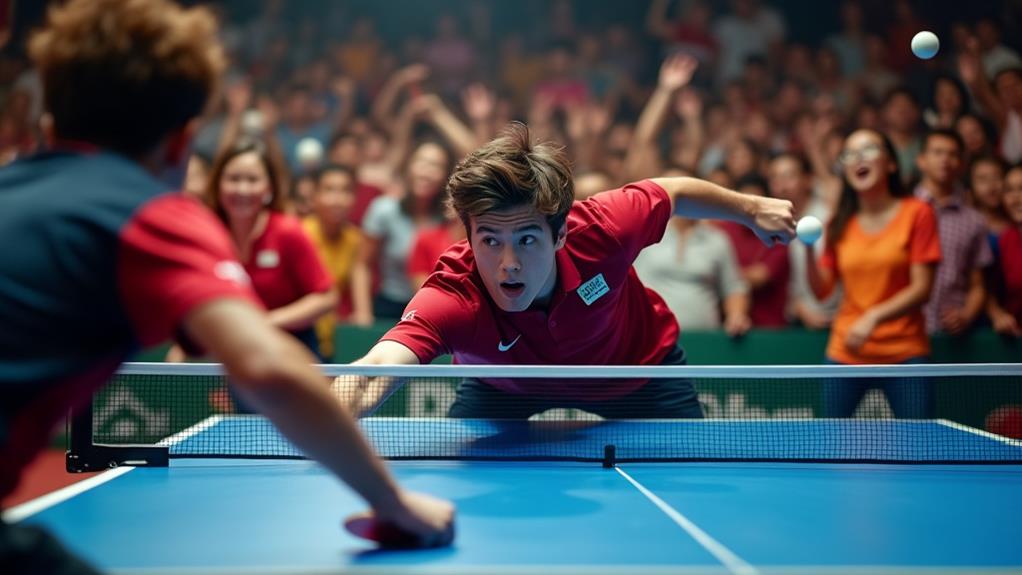
Fair play in table tennis isn't just about following the rules—it's about fostering a culture of respect and integrity on the court. When you play, adherence to the rules is essential, especially the prohibition against volleying, or hitting the ball before it bounces on the table. This guarantees the game's integrity and fairness.
You'll often find yourself in situations where disputes arise, especially when no referee is present. Here, the honor system comes into play. Resolving these disputes amicably emphasizes sportsmanship and mutual respect. It's about acknowledging a legal return, even if it means conceding a point. This kind of behavior strengthens camaraderie among players.
The International Table Tennis Federation (ITTF) sets clear rules and guidelines to promote fair play. By following these rules, you contribute to creating an equal opportunity for all participants, enhancing everyone's enjoyment and maintaining the sport's integrity.
Demonstrating fair play guarantees that every player feels respected and valued. It's not just about winning; it's about how you play the game. By embracing these principles, you help cultivate a positive community atmosphere in the sport of table tennis.
Common Misconceptions
Understanding the principles of fair play naturally leads us to address some common misconceptions in table tennis. One prevalent misconception is that volleying, or hitting the ball before it bounces on your side, is allowed. However, according to ITTF rules, this action results in an automatic point for your opponent. This bounce rule is crucial for maintaining the unique pace and fairness of the game, setting table tennis apart from other racket sports like lawn tennis.
Many players mistakenly believe they can return the ball before it bounces, often due to a lack of understanding of the specific regulations. This misunderstanding can lead to frustration during gameplay, as players may feel unfairly penalized. Clarifying this rule with coaches or through official resources can greatly improve your comprehension of the game.
Strategies for Legal Returns
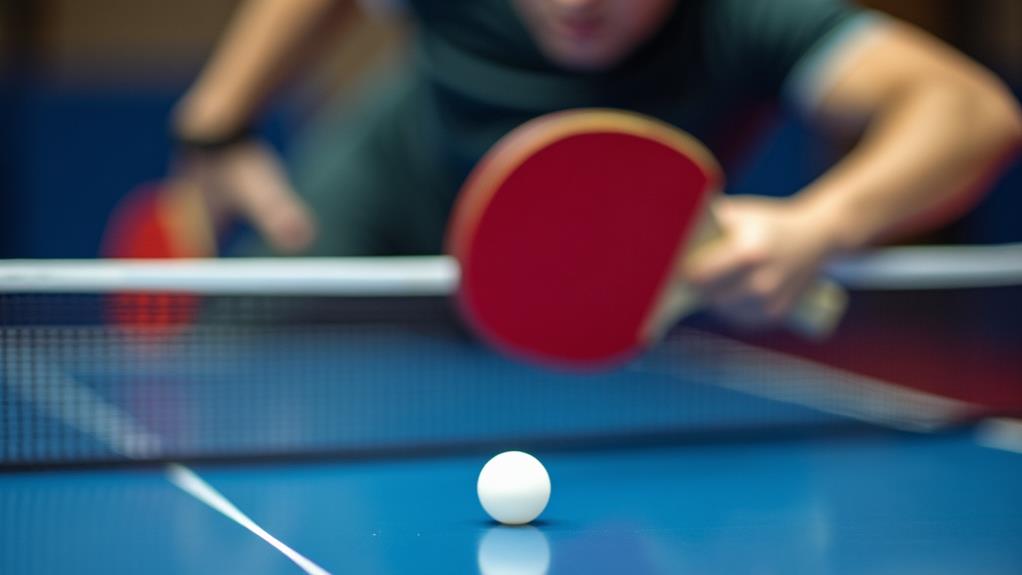
Mastering strategies for legal returns in table tennis is essential for maintaining the flow and fairness of the game. To guarantee a legal return, you must let the ball bounce once on your side before hitting it back. Timing is everything here—strike too early, and you'll lose the point immediately.
Effective positioning and footwork are key to waiting for that perfect bounce. By practicing these aspects, you'll gain better control over your returns. This means being ready to move quickly and getting into the right spot to make your shot as soon as the ball hits your side of the table.
Incorporating spin techniques into your game can also make your returns more challenging for your opponent. A well-executed spin affects the ball's trajectory after the bounce, making it harder for them to predict and react. This not only keeps the game dynamic but also gives you an edge regarding performance.
Understanding the timing and angles involved in returning serves is another essential skill. By mastering these elements, you'll improve your complete play and guarantee that you're always making legal returns, keeping the game both competitive and fun.
